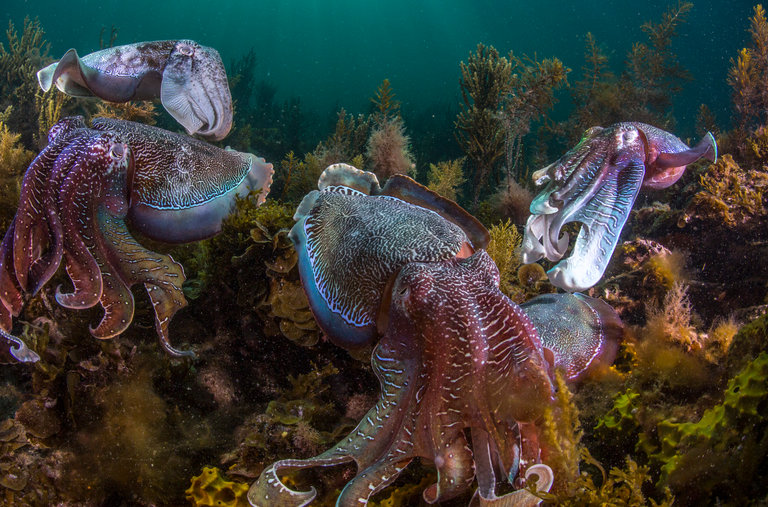Squid are chameleons of the ocean, shifting effortlessly from hue to hue as they cross sand, coral and grass. Scientists have long studied the peculiar structures in their skin that interact with light, trying to understand how the animals change color so swiftly and with such precision.
Now, a paper published last week in Nature Communications suggests that their chromatophores, previously thought to be mainly pockets of pigment embedded in their skin, are also equipped with tiny reflectors made of proteins. These reflectors aid the squid to produce such a wide array of colors, including iridescent greens and blues, within a second of passing in front of a new background. The research reveals that by using tricks found in other parts of the animal kingdom — like shimmering butterflies and peacocks — squid are able to combine multiple approaches to produce their vivid camouflage.
The researchers studied Doryteuthis pealeii, or the longfin squid, which is found in the North Atlantic Ocean and might turn up on your plate when you order calamari.
[Like the Science Times page on Facebook. | Sign up for the Science Times newsletter.]
Its chromatophores contain individual sacs of yellow, red or brown pigment. Each one is also ringed with small muscles that allow the animal to clench shut or open wide each chromatophore. That means that in front of brown sea grass, for example, red and yellow chromatophores might cinch closed, allowing the brown pigments to show.
Under illumination and electrical stimulation, the chromatophores on squid skin open.CreditCreditBy Stephen Senft
But what is the source of all those vivid blues and greens that squid are known to display? Researchers had long imagined that the layer below the chromatophores in the squid’s skin might be responsible for those pyrotechnic shimmers. That underlayer is essentially an enormous reflector, made of cells that make a protein called reflectin.
However, that layer responds to changes too slowly to be the sole source of those colors, said Leila Deravi, a professor of chemistry at Northeastern University and an author of the new paper.
In search of answers, she and her collaborators at the Woods Hole Oceanographic Institution and elsewhere put squid skin under the microscope and saw something reflective on the surface of the chromatophores. As they moved a beam of light to shine at different angles off the skin, the round blobs of yellow, red and brown pigment lit up like Christmas trees.
“We saw a really bright, metallic-y kind of color associated with the chromatophores,” said Dr. Deravi. “And at different angles we could see blue-greens come out, we could see just the whole spectrum of color emerge.”
Analyzing the proteins that the chromatophore cells were making, the team realized that reflectin was among them, and they confirmed with further lab work that it was distributed around the surface of the chromatophores.
Many colors reflected from a single yellow chromatophore under illumination.CreditCreditBy Stephen Senft
Light strikes arrays of reflectin, bounces around and refracts out, producing colors. The same kind of interaction, called structural color, produces the blue of a morpho butterfly’s wings, a peacock’s tail father or a blue human eye.
Pigments, by contrast, like the one behind brown eyes, are small molecules that simply absorb some colors of light and release others. These are fundamentally different ways of making color. But squid have the benefit of both.
The squid control the movement of the reflectin that is on the outside of the chromatophores with the same movements that control the opening and closing of the structure’s mouth, manipulating both kinds of color simultaneously. With this intimate connection between the two, “these cephalopods have evolved a way to help them become one of the fastest camouflaging species on the planet,” Dr. Deravi said.
The shimmering, shifting surface of the squid’s skin may someday provide insights for new materials that use the same tricks. But how exactly the squid matches its perception of its environment to its appearance using the precise manipulation of thousands of structures all over its skin is still a subject of much research.
“We were always continuously surprised by these animals. As soon as you think you kind of understand how they work, you find something else,” Dr. Deravi said.








